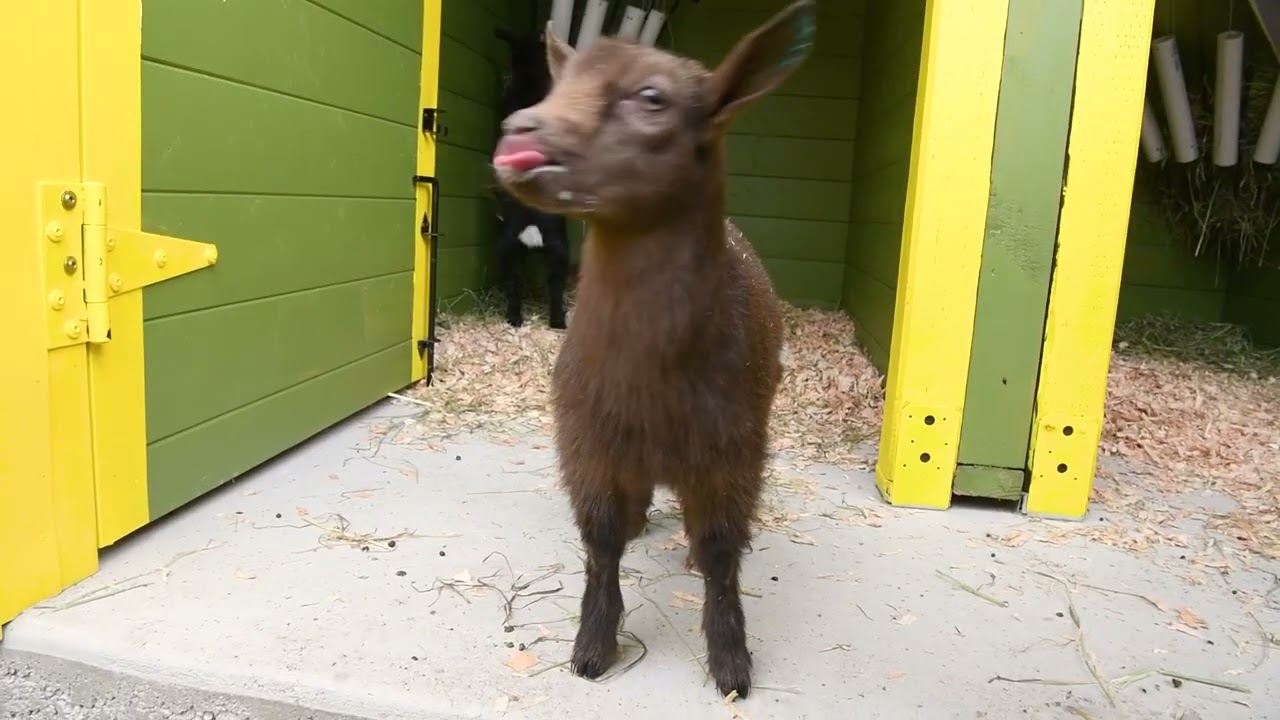– The significance of birth in captive breeding programs for conservation efforts
– Understanding the behaviors and developmental milestones of baby goat kids
– The role of public engagement through sharing moments like the arrival of seven adorable baby goat kids in promoting wildlife conservation
The arrival of seven adorable baby goat kids captures the public’s attention due to their charismatic appeal. It is a pivotal moment in the dialogue on captive breeding programs and their indispensable role in wildlife conservation and zoo management. This article delves into the multifaceted dimensions of such an event, shedding light on its broader implications for conservation efforts, the underlying zoological principles governing the care and understanding of these young animals, and the importance of utilizing these moments to foster a deeper public connection with wildlife.
In wildlife conservation, the birth of baby goat kids within a controlled zoo environment is a testament to the successful implementation of captive breeding programs. These programs are crucial for the preservation of biodiversity, especially for species that are threatened or endangered. The careful monitoring and planning of breeding activities are essential to ensure a genetically diverse population that can contribute to the long-term viability of a species. Although goats are not typically considered endangered, the principles applied in their breeding and care in zoos can be extrapolated to support conservation efforts for less populous species.
A detailed understanding of baby goat kids’ behaviors and developmental milestones is essential for zoo management and zoological staff. From their arrival, these young animals embark on a rapid growth and learning journey. Their early life stages are marked by critical developmental milestones, including the development of social behaviors, the establishment of feeding patterns, and the growth of physical capabilities like jumping and climbing. These indicators are vital for zookeepers to monitor to ensure the health and well-being of the baby goats. Observing these developmental processes in goat kids provides valuable insights that can be applied to caring for other young animals in a zoo setting.
The sharing of the arrival of seven adorable baby goat kids with the public plays a significant role in the broader context of wildlife conservation. By engaging the public’s interest and affection for these animals, zoos can cultivate a deeper appreciation for nature and the importance of conservation efforts. Such moments are opportunities for education and engagement, where the charismatic appeal of baby animals can be leveraged to convey messages about the importance of biodiversity, the threats faced by various species, and the efforts being undertaken to mitigate these threats. Public engagement is a powerful tool in the conservation toolkit, as it fosters a sense of connection and responsibility towards the natural world.
Furthermore, the lives of these goats within the zoo setting offer a microcosm through which various aspects of animal care, welfare, and management can be explored. The dietary preferences, social dynamics, and environmental needs of goat kids are of keen interest to zoologists and zoo management professionals. Through understanding these needs, zoos can refine their practices, ensuring environments that promote the physical and psychological well-being of the animals in their care. This, in turn, supports the broader conservation goals by demonstrating commitment to the highest animal welfare standards.
In bringing attention to the arrival of seven adorable baby goat kids and exploring the various contexts in which this event is significant, it is clear that such moments are far more than just opportunities for public amusement. They are, in essence, vibrant intersections of education, conservation, and research. By fostering an environment that supports healthy development for these baby goats, zoos contribute to the overarching objectives of wildlife conservation. Additionally, by sharing these moments with the public, they enhance awareness and support for these efforts, underlining the interconnectedness of human well-being with the health of our planet’s ecosystems.
Moreover, the engagement strategies employed by zoos, including sharing captivating moments like the arrival of baby goat kids, are crucial in building long-term support for conservation initiatives. By effectively communicating the needs and progress of species under their care, zoos can inspire action and support from the community, furthering the goals of species preservation and environmental stewardship.
The arrival of seven adorable baby goat kids encapsulates a multifaceted opportunity for conservation, education, and engagement. By examining the intricate details of their care and development, alongside the broader conservation implications, we gain insights into the complex yet rewarding field of zoo management and wildlife conservation. These efforts contribute to preserving biodiversity and foster a more informed and engaged society eager to support the conservation of our natural world.
*****
Source Description
Have you herd? Seven adorable baby goat kids are now here at the Zoo! Come by Kids’ Zone and meet the playful new kids. The 7-week-old Nigerian dwarf goat kids are viewable to guests but not for touching or feeding yet. We are giving these cuties plenty of time to get settled in and acquainted with their new home and keepers. The growing kids are being bottle-fed twice a day and closely monitored until they grow a little bigger to mingle with our current goat herd. Don’t miss a bleat; more adorable photos and videos are coming soon!


